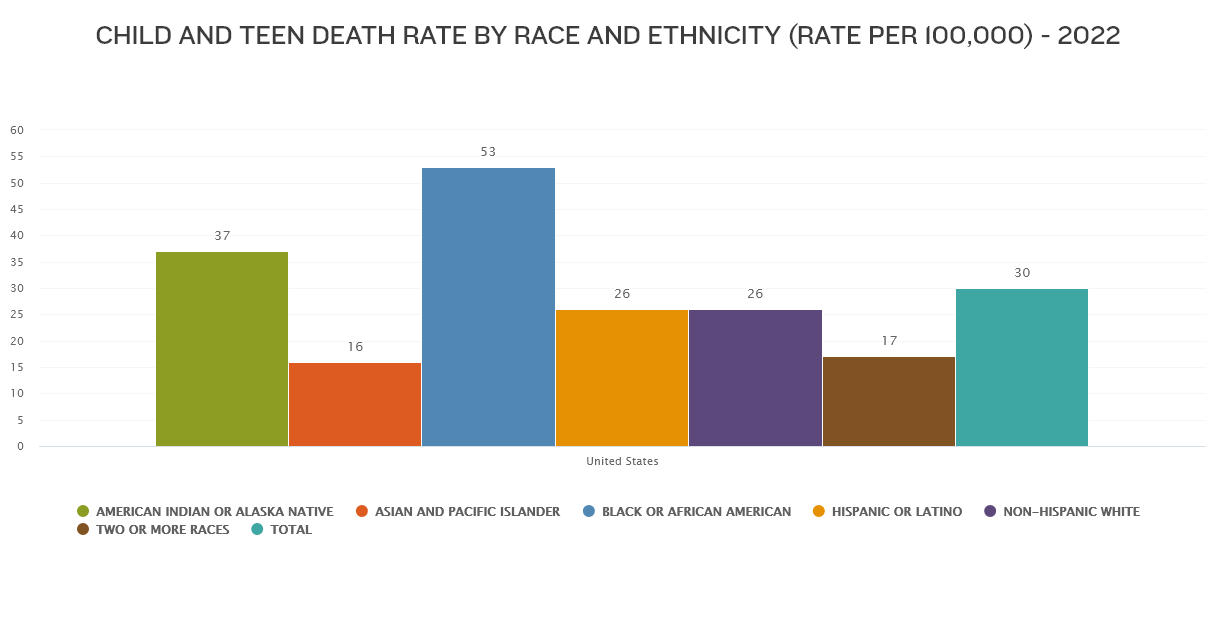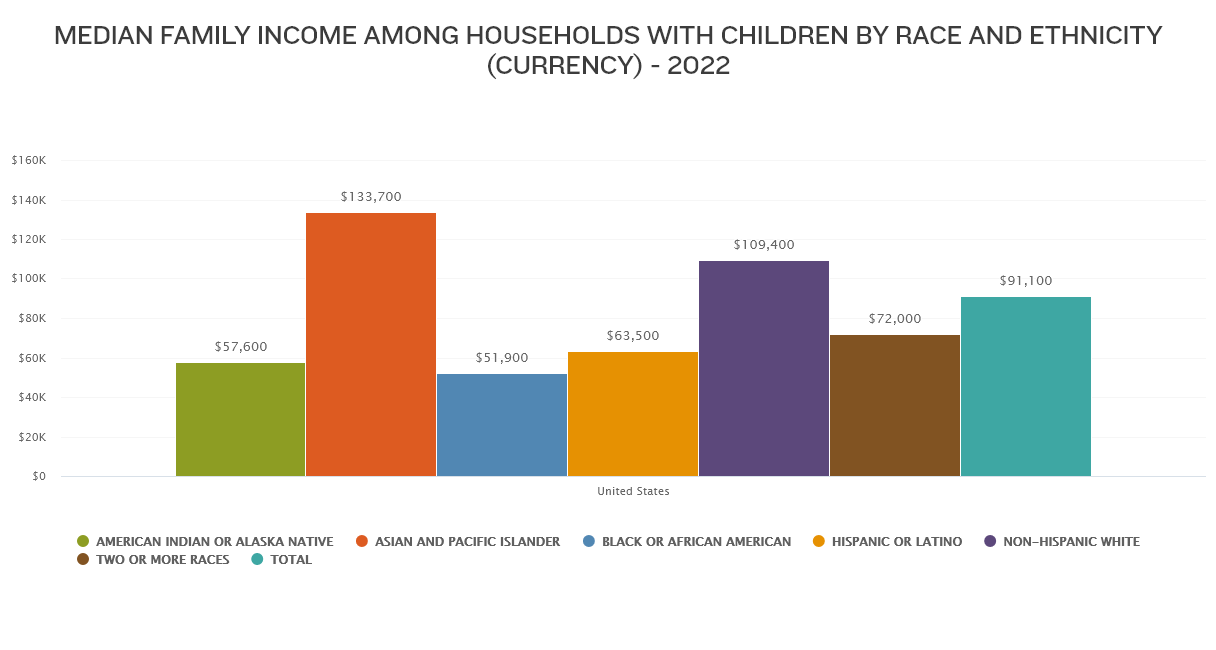National Hispanic Heritage Month
Taking a Closer Look at Latino Children’s Well-Being

National Hispanic Heritage Month is an opportunity to honor the rich cultural diversity and histories of Hispanic and Latino populations in America. Each year, from Sept. 15 to Oct. 15, the month celebrates the valuable contributions these families and individuals make to our country. Given the Annie E. Casey Foundation’s focus on strengthening families and tracking the status of children through the KIDS COUNT® Data Center, this month is an excellent opportunity to take stock of Hispanic and Latino children’s health and well-being.
Who Are Hispanic and Latino Children?
Hispanic or Latino* children — representing over 1 in 4 kids nationwide — are not a homogeneous group. The U.S. Census Bureau categorizes more than 30 different Hispanic or Latino groups, including people originating from Mexico, Central or South America, Puerto Rico, Cuba and/or other Spanish-speaking countries. While these children represent a wide array of culturally diverse populations, most data sources categorize them as one group, which can mask important differences between populations. For instance, the Foundation’s 2024 Race for Results report found that among the 10 largest Latino or Hispanic groups in America, young people in families from Colombia, Spain and Cuba were more likely to meet benchmarks of financial stability, while families and young people from Honduras and Guatemala were the least likely to do so.
More than 90% of Hispanic or Latino children are U.S.-born citizens, although over half (51%) live in immigrant families, according to the Race for Results report. Children from Puerto Rico are U.S. citizens, of course, by virtue of their birth in a U.S. territory. More than 1.7 million Latino children in the United States are Puerto Rican.
Among children of color in America, Hispanic or Latino kids make up the largest racial or ethnic group, and they have grown — in number and share — more than any other group over the past two decades. Since 2000, the population of Hispanic or Latino children increased from approximately 12.5 million to 19.2 million in 2023.
These children live in every region of the country, illustrated by the map below. The largest concentrations of these young people are in three southwestern states, representing more than half of all children in New Mexico (60% in 2023) and California (52%), and nearly half in Texas (48%). However, the percentage of kids who are Hispanic or Latino has increased in all 50 states and D.C. since the turn of the century. More recently, all states except Texas saw growth in this figure since 2010, and fewer states — just 38 including D.C. — saw increases since 2020.

Many Hispanic and Latino kids are thriving across the United States, bolstered by nurturing families, strong communities and other assets such as bilingualism. These young people will play a major role in the future workforce, elections, leadership and other aspects of society. Ensuring the well-being of these children will be vital to the success of our nation in the coming decades.
Hispanic and Latino Children’s Health and Well-Being
The 2024 KIDS COUNT Data Book highlights areas in which Hispanic and Latino children and youth are faring better than national averages on health and safety measures. It also notes areas in which these children continue to experience disproportionately worse outcomes. Among the positive findings, infants who are Hispanic or Latino are more likely to be born at a healthy weight. This is critical because low birth weight is linked to long-term health problems and infant mortality. Kids and adolescents who are Hispanic or Latino also have lower death rates than the national average.
Despite these important successes, dozens of other indicators illustrate that our country is not providing Hispanic or Latino children and families with equitable opportunities and resources to achieve their full potential.

According to the latest data, some statistics that warrant attention include:
- Weight: More than 2 in 5 (42%) Latino or Hispanic ages 10 to 17 are overweight or obese, the highest rate of all racial or ethnic groups and well above the national rate of 33%, according to the KIDS COUNT Data Book.
- Health Insurance Coverage: Nearly 1 in 10 (9% in 2022) Hispanic or Latino children under age 19 lack health insurance, also higher than the national rate (5%). Coverage is worse for youth and young adults ages 14 to 24. Almost 1 in 5 (18%) of Latino or Hispanic young people in this older age group were uninsured in 2018–2022, compared to 11% of their peers nationwide.
- Poverty: More than 1 in 5 (22%) Hispanic or Latino children live below the federal poverty level, a figure that exceeded the national average (16% in 2022) for decades. One in 10 lives in extreme poverty, which means below 50% of the federal poverty threshold ($29,678 for a family of two adults and two kids in 2022).
- Low-Income: Since families can earn well over the federal poverty threshold and still struggle to meet basic needs, it is helpful to consider those living below 200% of the poverty level, which is considered low-income. In 2022, In 2022, 50% of Latino or Hispanic kids lived in low-income families, compared to 37% nationwide.
- Secure Parental Employment: Almost 1 in 3 (31%) Hispanic or Latino kids had parents who lacked secure jobs in 2022, above the national average (26%) but an improvement from a decade ago in 2012 (38%).
- Parents Without a High School Degree: Providing more context for the findings related to financial and employment hardship, the KIDS COUNT Data Book reported that Latino or Hispanic kids are the most likely to live with a head of household who lacks a high school diploma (25% in 2022), more than twice the national rate (11%).
- Median Income: The median annual income for families of Hispanic or Latino origin ($63,500 in 2022) continues to be far below the national average ($91,100), as well as that of white ($109,400) and Asian and Pacific Islander families ($133,700).

- Housing Cost Burdens: Hispanic or Latino kids are more likely to live in households with high housing cost burdens, meaning more than 30% of monthly income goes to housing expenses, compared to the U.S. average: (39% versus 30%, respectively), in 2022.
- Early Childhood Education: Young Latino or Hispanic kids ages 3 and 4 are less likely to attend preschool (61% not enrolled) compared to their peers nationally (54%) or in other racial or ethnic groups, according to 2018–22 data in the KIDS COUNT Data Book. High-quality child care and preschool programs set the stage for child development, well-being and learning — they are particularly beneficial for children from low-income households.
- Reading and Math Proficiency: Although much improved from two decades ago, reading and math proficiency rates — key indicators of future academic and employment success — for Hispanic or Latino students remain well below national levels, as reported in the KIDS COUNT Data Book. In 2022, just 1 in 5 (20%) of these fourth graders achieved proficiency in reading, and 1 in 7 (14%) eighth graders were proficient in math, compared to 32% and 26%, respectively, nationwide.
- High School Graduation: Between 2013–14 and 2021–22, students who are Latino or Hispanic made substantial gains on the key benchmark of graduating from high school on time — improving from 76% to 83%. Still, disparities endure, with the rate remaining below the U.S. graduation rate of 87% in 2021–22.
- Children in Immigrant Families: Latino or Hispanic kids in immigrant families face many barriers to opportunity, according to the Race for Results report. For example, just 8% of these fourth-grade students in immigrant families were reading proficiently in 2022, less than three times the rate (29%) of their peers in U.S.-born families. Latino or Hispanic kids in immigrant families are also more likely to live with a householder who lacks a high school diploma: 40% versus 16% among those in U.S.-born families, according to 2017–21 data. Read more about U.S. children in immigrant families.
These represent a small selection of findings for Hispanic or Latino kids, youth and families. You can access 100+ measures by race and ethnicity related to demographics, economics, family and community issues, education, health and safety on the KIDS COUNT Data Center.
Building Stronger Hispanic and Latino Communities
Policymakers, funders, advocates and other leaders can use these data to increase awareness and support for Hispanic or Latino children and families, strengthen programs and policies and ensure that they have equitable access to the opportunities and resources needed to thrive. Evidence-based examples to provide a path to success include:
- Expanding federal and state child tax credits and earned income tax credits for low-income families;
- Strengthening other safety net programs, like food and housing assistance;
- Providing broad access to affordable and culturally/linguistically appropriate early childhood education programs, family support services and mental health care — especially in under-resourced neighborhoods;
- Reducing persistent gaps in income and wealth by race by designing long-term public programs to help families provide for their children’s future, such as “baby bond proposals” described in the Race for Results report;
- Ensuring that all families have access to high-quality, affordable health insurance and health care, e.g., expanding Medicaid coverage; and
- Maximizing two-generation community approaches that improve the quality of child care and schools for kids — particularly in low-income communities — and help parents with their own education, job skills and other needs.
Despite the many strengths of Latino families and areas in which these children and youth have made progress over the last two decades, stubborn obstacles remain that undermine the chances for these young people to succeed. Our nation can — and must — do more to remove the hurdles they disproportionately encounter on the road to adulthood.
Explore More Resources Related to Hispanic and Latino Children and Youth
- 2024 KIDS COUNT Data Book
- 2024 Race for Results: Building a Pathway to Opportunity for All Children
- Supporting English Language Learners (Blog)
- Helping Latino and African American Students Get Early Treatment for Depression (Blog)
- Supporting Latino Student Parents Pursuing Higher Education (Blog)
- The Latinx Data Gap in the Youth Justice System (Report)
- Racial Equity and Inclusion (Resources)
- Two-Generation Approaches to Reducing Poverty (Resources)
- Who Are Children in Immigrant Families? (Blog)
Sign Up For Our Newsletters To Get The Latest Data and Resource
*Because the federal government considers Latino or Hispanic an ethnicity, children in this group can be of any racial category.






